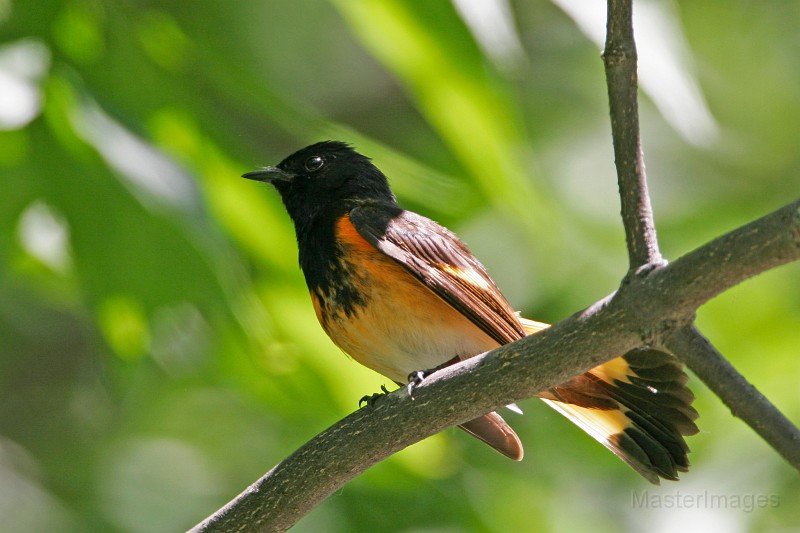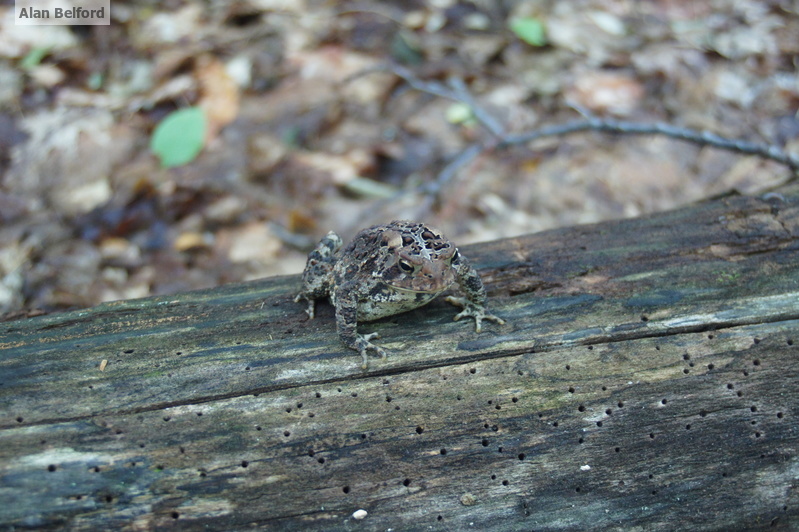Each year in the Adirondacks, the All-Taxa Biodiversity Inventory (ATBI) seeks to document the array of species which inhabit a certain patch of the park by inviting volunteer naturalists of all walks and skill levels to survey the landscape in what is popularly called a "bioblitz." This year's event occurred in Newcomb the last weekend in June at the Adirondack Interpretive Center (AIC) and the surrounding grounds associated with the Adirondack Ecological Center (AEC). The center sits a couple miles east of the Hamilton County border and offers visitors a chance to explore their interpretive building, displays, and trails.
The theme for this year's bioblitz was centered on pollinators and a team of bee experts from the USGS was based in Newcomb all week conducting field work. The rest of us volunteer naturalists came and divided up to focus on surveying one or two particular groups of organisms. As usual I helped survey the birds, but we took note of all terrestrial vertebrates and one party member busied himself by taking photos of a variety of insects which the insect experts could later identify.
Finding Birds
Our initial birding foray along the trails was rather rushed since we only had a brief period of time before we had to return to the center for introductory remarks. But we had already found species like Northern Parula, Common Yellowthroat, Black-throated Green Warbler, and Swainson's Thrush by the time we were due back. After our short meeting with everyone, the birding crews again fanned out across the trails and three of us headed down the road to check out Rich Lake near the Adirondack Ecological Center.

The Beach at Rich Lake
We continued to add to our tallies of species and individual counts, with growing numbers of Red-eyed and Blue-headed Vireos, Ovenbird, and American Redstart, among others. As we drove in to check out the beach at Rich Lake, we spotted a Veery in the road which flew but remained in view in a small tree. It was a nice find for the day. Even more exciting was a singing Wood Thrush which we noticed when we exited the car in order to get a better look at the Veery. With Hermit and Swainson's Thrushes already found, we were have a great day with thrushes. As we walked towards Rich Lake we noticed there were really two Veeries as well as a few other species like Black-capped Chickadee and American Redstart which we had been noting regularly.
The lake itself was quiet, and we were all tempted to abandon our bird work in favor of a swim at the beautiful beach on the rapidly warming day. The photographer in our group snapped photos of Tiger Beetles and damselflies for the insect census and we also found a Pickerel Frog where a spring fed the lake. We had already found American Toad, Bull Frog, Green Frog, and Mink Frog, so we were doing well on finding herps as well as birds. We also checked the sand for mammal tracks, but didn't find any besides those of White-tailed Deer. After checking the lake in one additional spot – where we spotted a Common Loon – we moved on to Lodo Pond which sits south of Route 28N.

We had stopped along Route 28N at Lodo earlier that morning and had spotted among other things a few Wood Ducks tucked into the back corner of the pond. This time though we were hiking to check out the woods a bit better. The trail along the border of Lodo Pond was sketchy at best with flagging hung here and there to commemorate someone's attempt to mark the way. I tried to follow it as best as I could, but eventually found it easier to simply follow the shore of the mucky lake. The others remained back to work along the edge of the lake from the road. While the path was rough, my progress was fairly quick, partly because I didn't want to stop for long and give the deer flies even more opportunity to amass an attacking force. I found species like Northern Parula, and Magnolia Warbler and when I called for Barred Owl, I attracted the ire of Red-breasted Nuthatches.
As I departed the trail which eventually turned away from the pond, I followed along the shore to the back corner of the lake into a wet, muddy forest which seemed to be the local headquarters for the deer flies in the area. The hassle of the swarm was worthwhile however, because I soon added Canada Warbler and Swamp Sparrow for our day's list, and shortly thereafter heard the Quick, Three Beers! of an Olive-sided Flycatcher singing from the snags on the backside of the lake. That was followed almost immediately by a pair of Barred Owls hooting in the distance, evidently responding to my earlier calls, and as I walked further to see what else I could find, I came across Black Bear scat and Raccoon tracks in the mud, both adding to our tally of mammals.
Happy with my finds I retraced my steps towards my group. The rest of the group had been successful along the road adding Garter Snake and Painted Turtle to our herp list and we also heard a Spring Peeper call near where we parked. Ready to eat lunch (I had a hoagie from Shaheen's in Tupper Lake waiting for me), we headed to the car, but before we got there we added a second singing Wood Thrush for the day. With that we went back to the AIC where we met with the other bird groups to tally our species and counts, adding Turkey Vulture and Great-crested Flycatcher to our list as we headed home along Route 28N. Interested folks should visit http://www.inaturalist.org/projects/2014-atbi-bioblitz to learn more.






